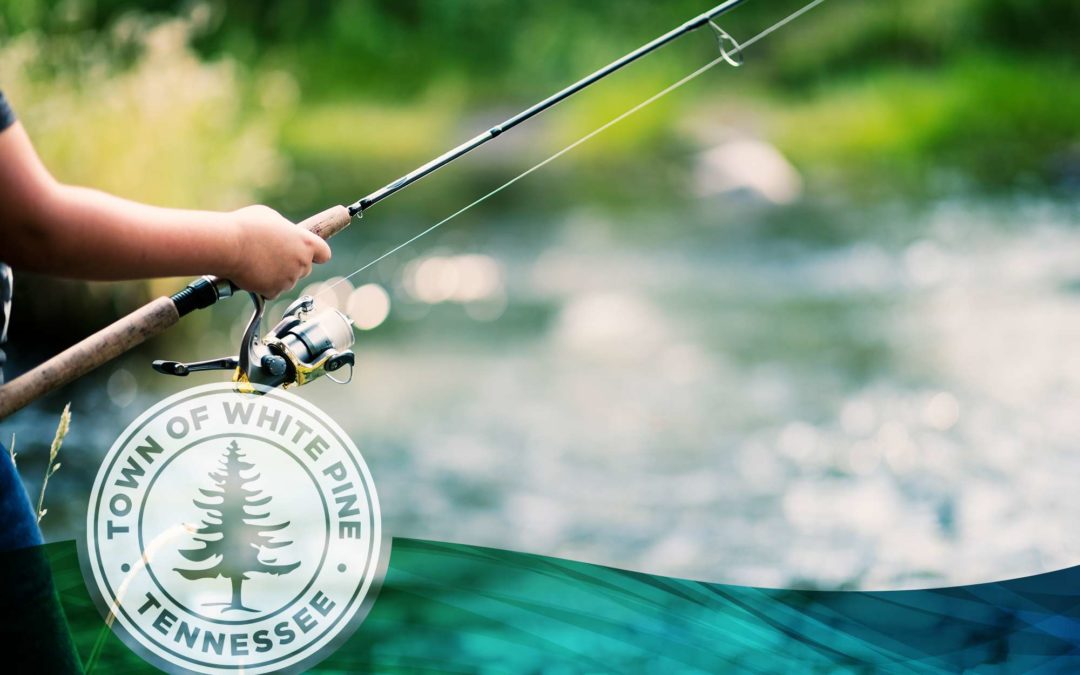Imagine yourself out on the lake with your family or your closest friends. The sun is peering through the trees and peaking over the Smoky Mountains in the distance as you feel the end of your fishing rod start to tug. You’re out making memories with the people you love, and no big fish tales needed for this day on the water.
Here on the Lakeside of the Smokies, Douglas Lake is the crown jewel of the White Pine and Jefferson County community. Covering over 28,000 acres with more than 500 miles of shore, this stunning body of water sits nestled at the foot of the Great Smoky Mountains National Park, giving visitors endless views.
But Douglas Lake isn’t famous just for its beautiful landscape. The lake is also home to some of the best fishing in the nation and has hosted several major fishing tournaments, including the 2018 Bass Pro Shops Eastern Open.
No trip to East Tennessee is complete without a day wetting a line at the Douglas Lake, and we’ve got the insight to help you get the most from your time fishing with your friends and family. Here’s a quick guide to get you started so you can tell some great stories about the ones that didn’t get away!
History of Douglas Lake
Construction on Douglas Dam began in 1942 and was completed just over a year later by the Tennessee Valley Authority to provide hydroelectric power to thousands of families and to control flooding downstream in the Tennessee River Valley. Fed by the French Broad River, the lake not only became a source of electricity for the largely rural area at the time, but it also became a recreation destination for anglers and boating enthusiasts.
Tennessee Fishing License
To fish in the state of Tennessee, you must have a state fishing license. These licenses differ for residents and non-residents, so be sure to check which you need to obtain. They’re also readily available at sporting goods and hardware stores, and they’re available online as well. Be sure not to put this off. Fishing without a license can result in a fine.
Where and when to find the best fishing in Douglas Lake
Douglas Lake is enormous, which is great for landscape views and exploring. The size, however, can be overwhelming if you don’t know where to look for the best day fishing. For the best results, consider using a guide service who knows the area well and can show you the best spots to catch the most fish. But you can also use these areas and times of the year listed below to get you well on your way to making memories catching a big one.
1. Black bass
Both large and smallmouth varieties roam Douglas Lake. These fish spawn in the shallow areas of the lake and are most active March through June. Spinnerbaits in white and Carolina-rigged lizards work well with these types of fish. Other popular lures are Rattle Traps, DD-22’s, and electric red worms. Concentrations of largemouth bass have been observed in the creek channels after the water has been drawn down in the fall.
2. White bass
Start the year reeling in these schooling fish. The best time to catch white bass is between January and April, specifically late winter when they are spawning in the headwaters of the reservoir and French Broad River. The Leadvale area is especially good for white bass, who tend to bite on rooster tail lures, grubs, and small flies. There is a 15 fish daily limit on white bass, so you know there are opportunities for a big day catching these exciting fish.
3. Crappie
These fish are very popular at Douglas Lake and can be found in areas all across the lake where brush is sitting in the water. Flat, Muddy, and McGuire creeks are also good areas to look for crappie. The best months for catching crappie are February through early May, and small flies and small crankbaits are effective lures.
4. Catfish
There are plenty of catfish that live in Douglas Lake, but only one, 34-inch or longer can be harvested per day at the lake.
For those wanting to catch catfish, these anglers can find channel, blue, and flathead catfish in areas across Douglas Lake. Catfish feed on crayfish, worms, fish, insects, decaying animal matter, and mollusks, and spawning takes place when water surface temperatures near 75 degrees. Therefore, rocky ledges and cavities are the preferred spawning habitats.
5. Walleye and Sauger
These fish are a blast to catch, and fishermen from across the country come to snag one because they fight hard and taste delicious. Like white bass, the best time to catch these fish is between January and April as sauger makes a spring spawning run to the headwaters of the reservoir and the French Broad River during that time. Some great fishing takes place from Point 18 to the Walters Bridge area as fish move upstream near Baneberry. The most effective way to catch either of these fish is to use large red or orange flies as bait.
Historic White Pine is an Outdoor Lover’s Dream
East Tennessee has some incredible experiences in the outdoors, and a day fishing out on Douglas Lake is among the best. Along with fishing, visitors to White Pine can also enjoy hundreds of miles of hiking trails in the nearby Great Smoky Mountains National Park, have the thrill of a lifetime skydiving, or be a kid who just loves seeing some colorful hot air balloons soaring across the sky. White Pine is the perfect place to stay to give you a true East Tennessee experience. Sitting just over 40 miles northeast of Knoxville, Tennessee, White Pine is easily accessible from several major cities in the Southeast. This picturesque community is filled with family-owned businesses, local eateries, bookstore, and libraries. Come visit us on your next trip out of town with the people you love, and experience why we’re proud of our historic and growing little town.

